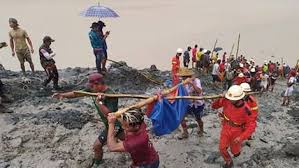Understanding the Current Situation in Myanmar

Introduction
The situation in Myanmar has remained a topic of international concern following the military coup in February 2021 that ousted the democratically elected government. The ongoing political instability, human rights violations, and humanitarian crises have drawn widespread attention from global leaders and organizations. Understanding the current state of Myanmar is vital for grasping the broader implications it holds for regional stability and human rights advocacy.
The Political Landscape
Since the coup, Myanmar has faced significant unrest, leading to widespread protests and civil disobedience movements. The military junta, known as the State Administration Council, has responded to dissent with violent crackdowns. Reports by human rights organizations indicate that over 2,000 civilians have been killed since the coup, with thousands more imprisoned. International condemnation has been swift, with countries like the United States and members of the European Union imposing sanctions on military leaders and their businesses.
Humanitarian Crisis
The political turmoil has severely affected the humanitarian landscape in Myanmar. Displacement has surged as thousands flee conflict zones, primarily in states like Kayah and Kachin. The UN estimates that around 1.3 million people are internally displaced, and approximately 14.4 million require humanitarian assistance. The COVID-19 pandemic has exacerbated these dire conditions, straining health systems already under pressure from ongoing conflicts.
International Response
The international community has taken various steps to address the situation in Myanmar. The Association of Southeast Asian Nations (ASEAN) has sought to mediate talks, but progress has been limited. Humanitarian aid organizations are attempting to deliver services, but access remains precarious due to security concerns. The UN continues to call for an end to violence and a return to democratic governance, urging member states to consider comprehensive measures to support the civilian population.
Conclusion
The situation in Myanmar remains fluid and complex. The struggle for democracy and human rights in the face of severe repression poses significant challenges for the people of Myanmar and for international policymakers. As the world watches, forecasts indicate that the struggle for a peaceful resolution will intensify, impacting not only the lives of Myanmar’s citizens but also the geopolitical dynamics in Southeast Asia. Continued support for humanitarian efforts and diplomatic engagement will be crucial as Myanmar navigates its uncertain future.









